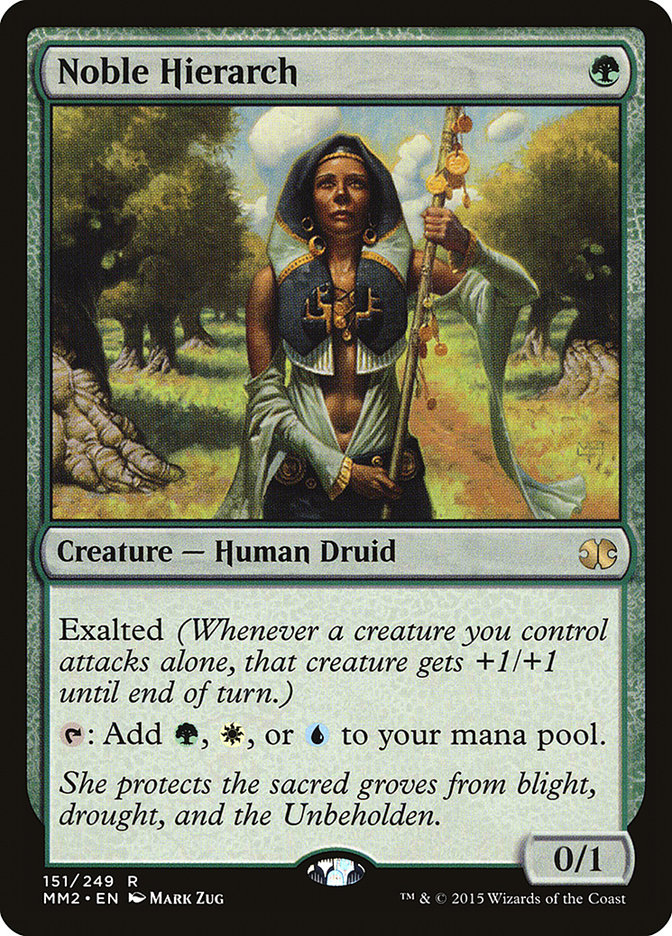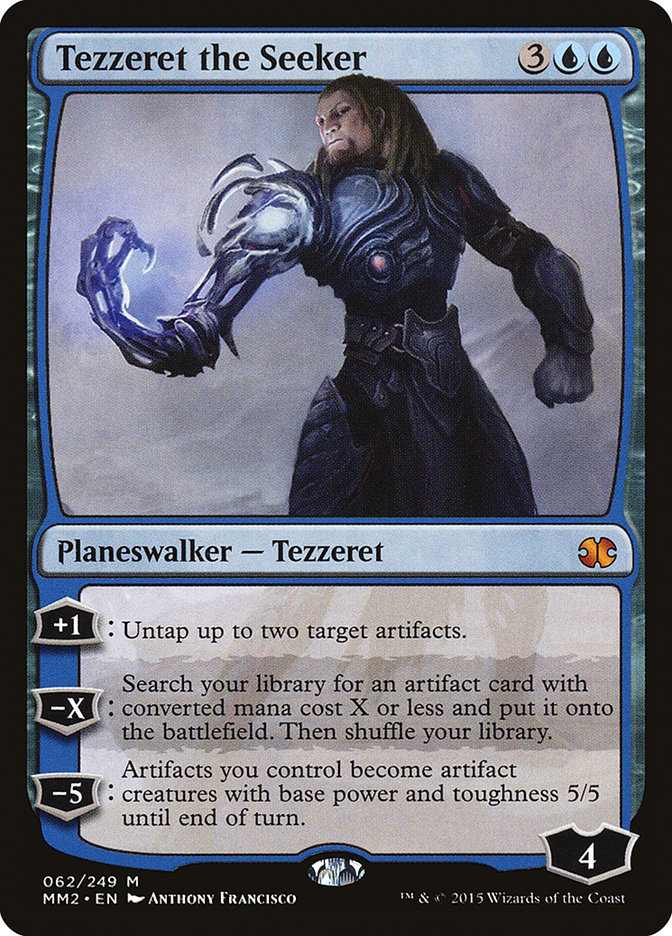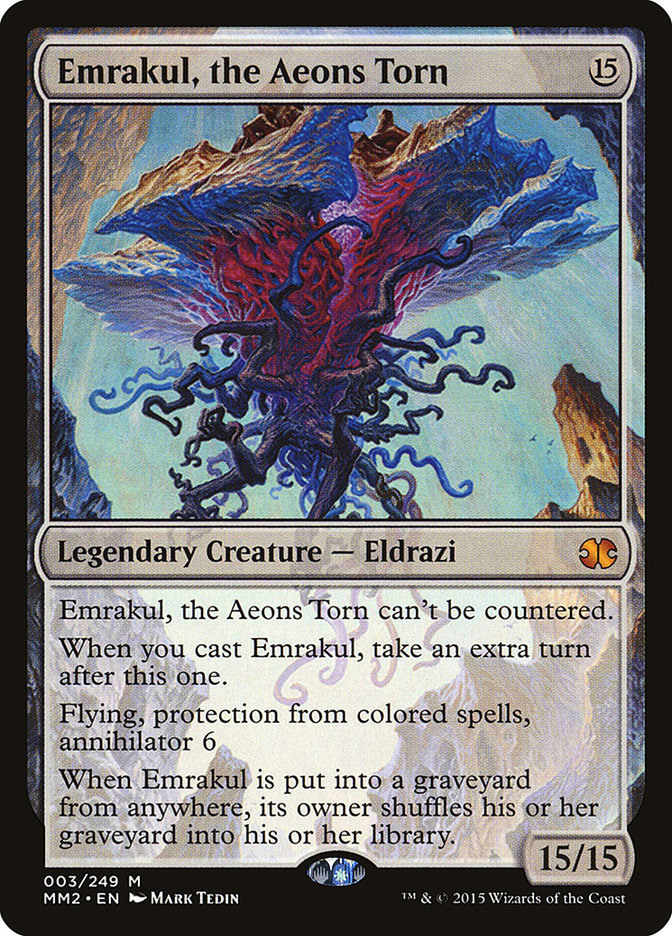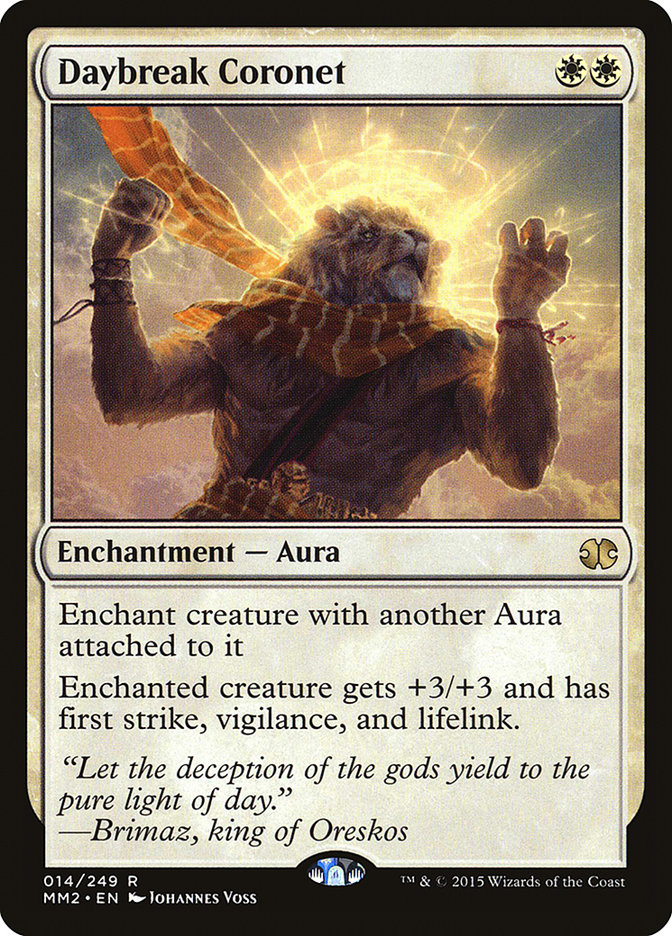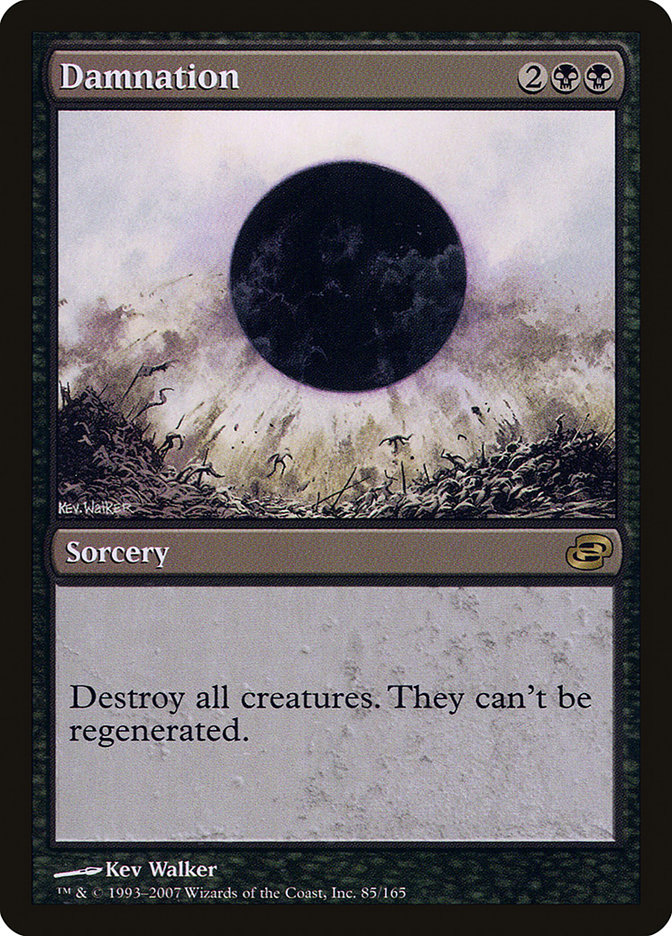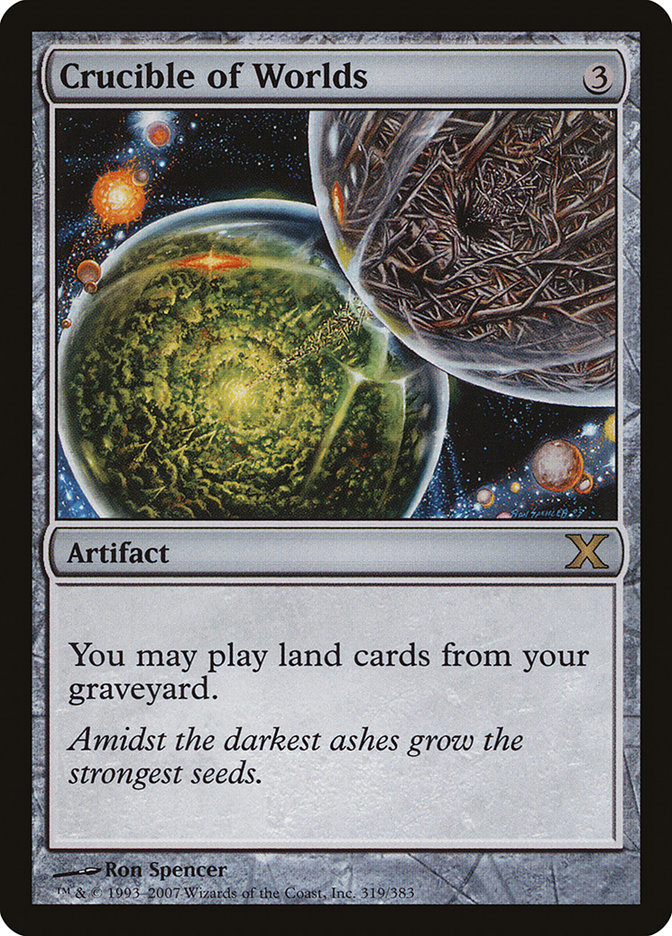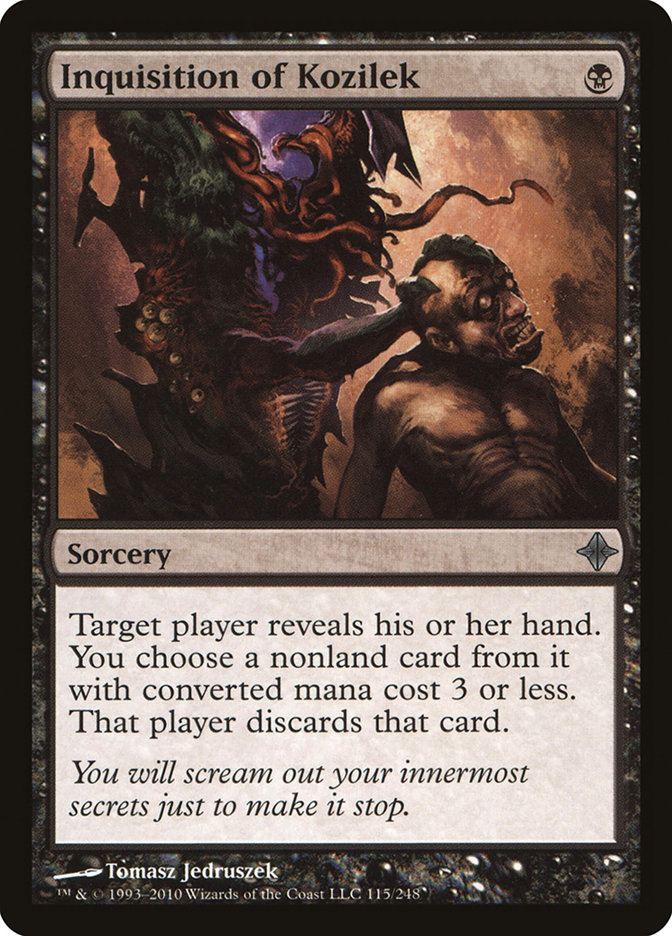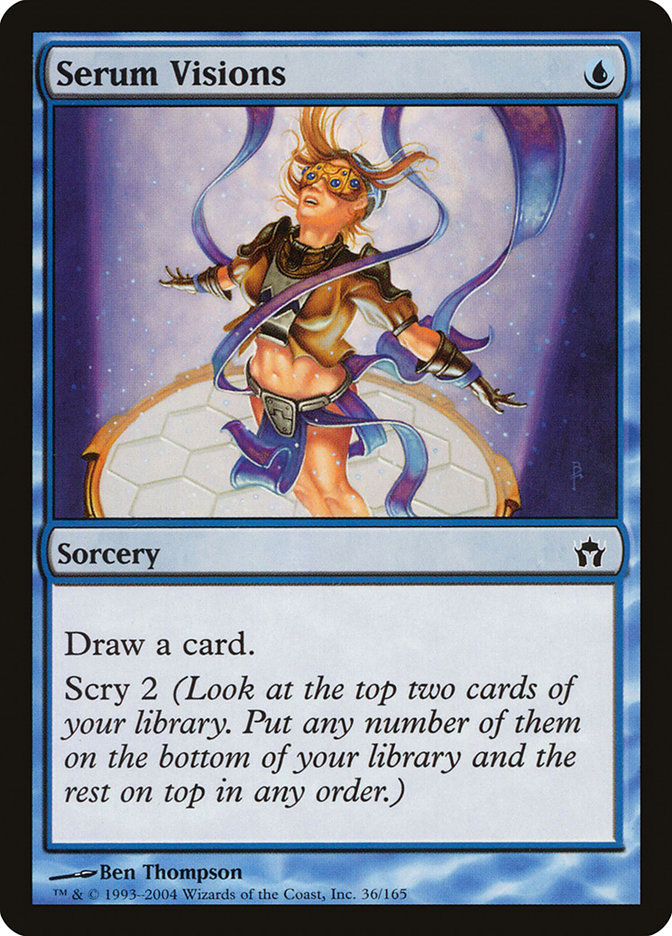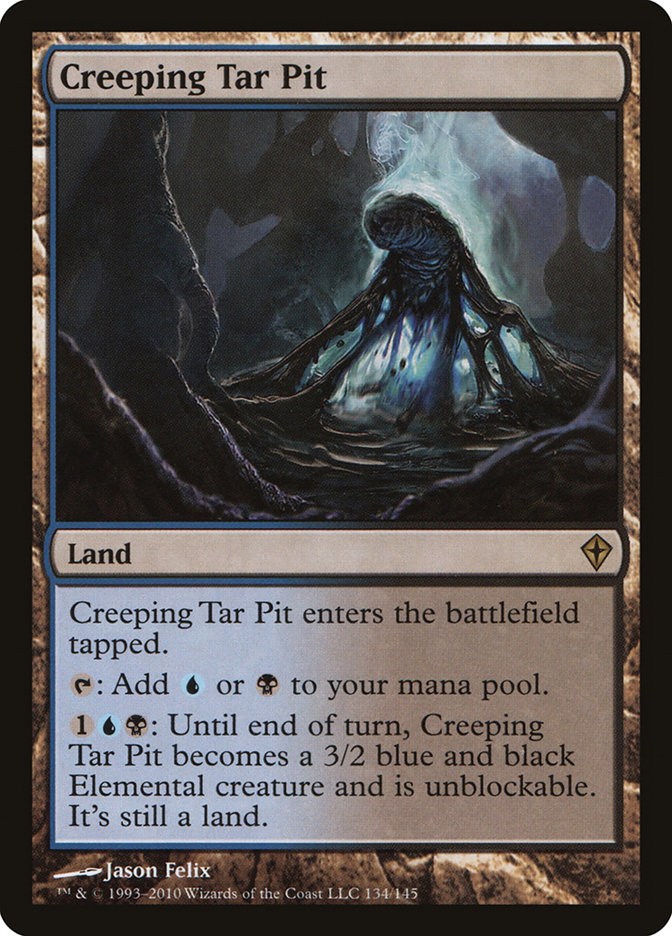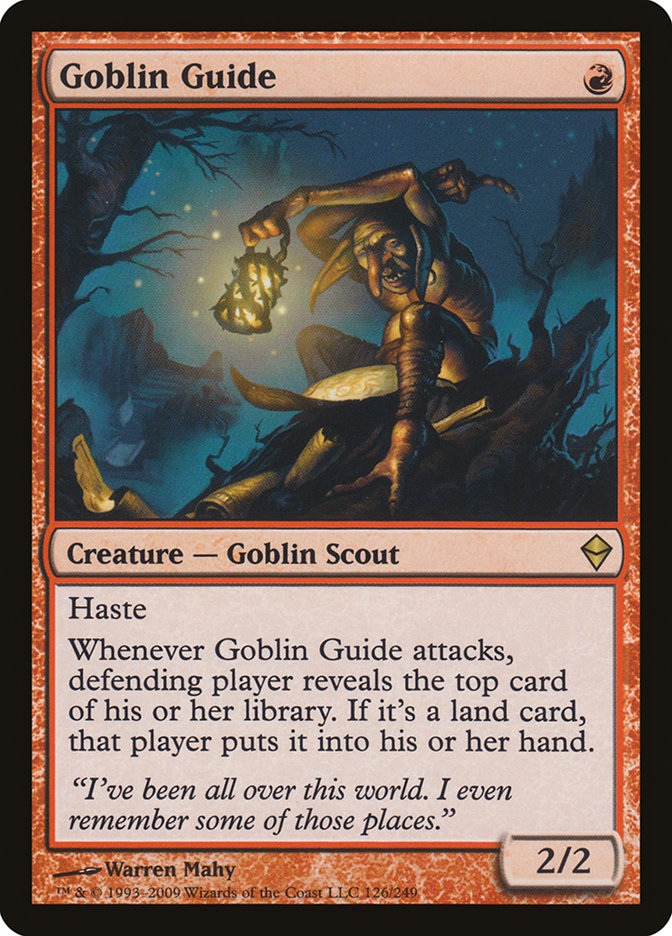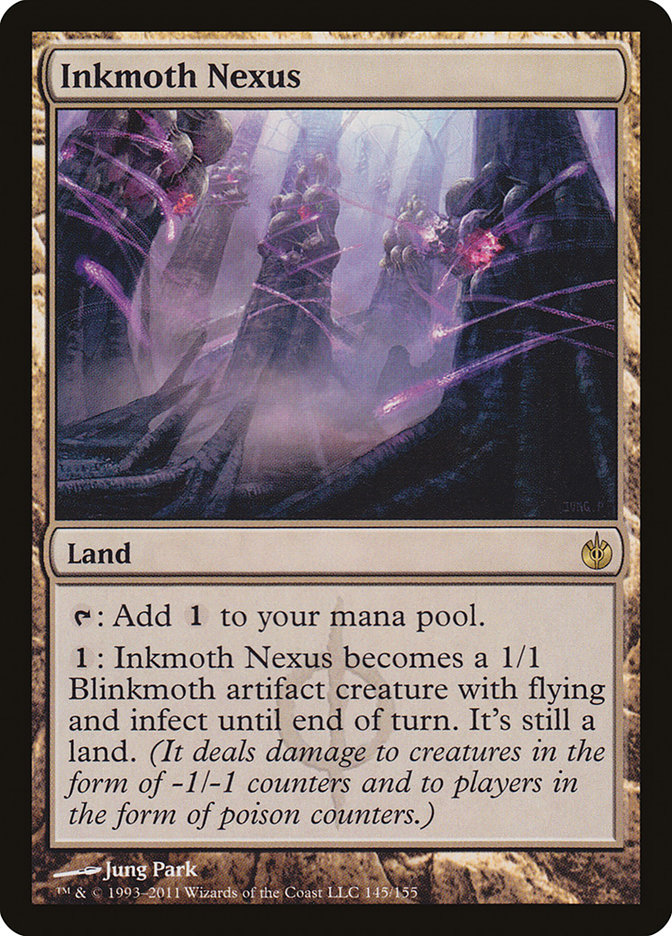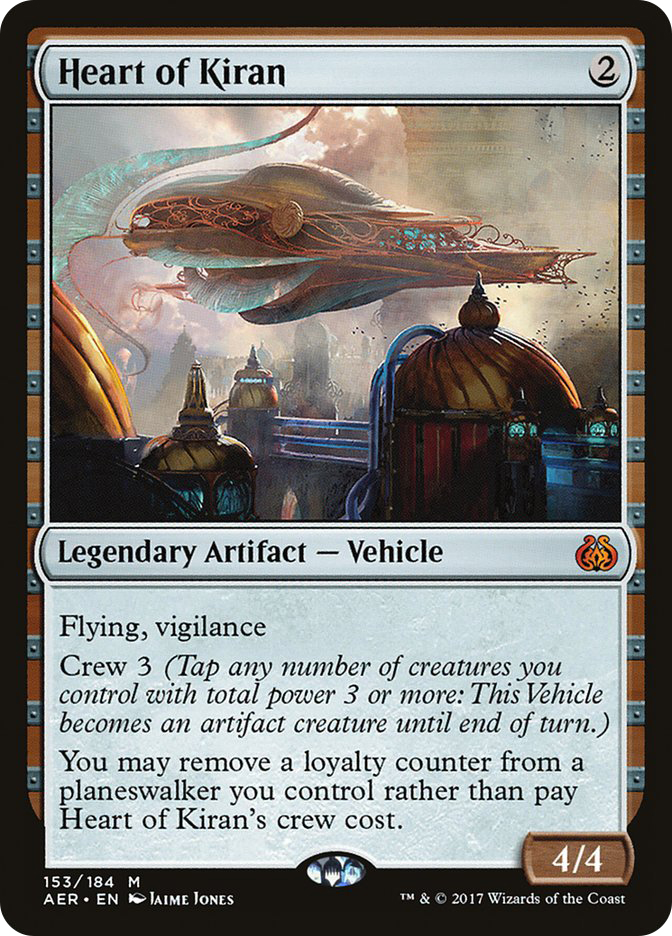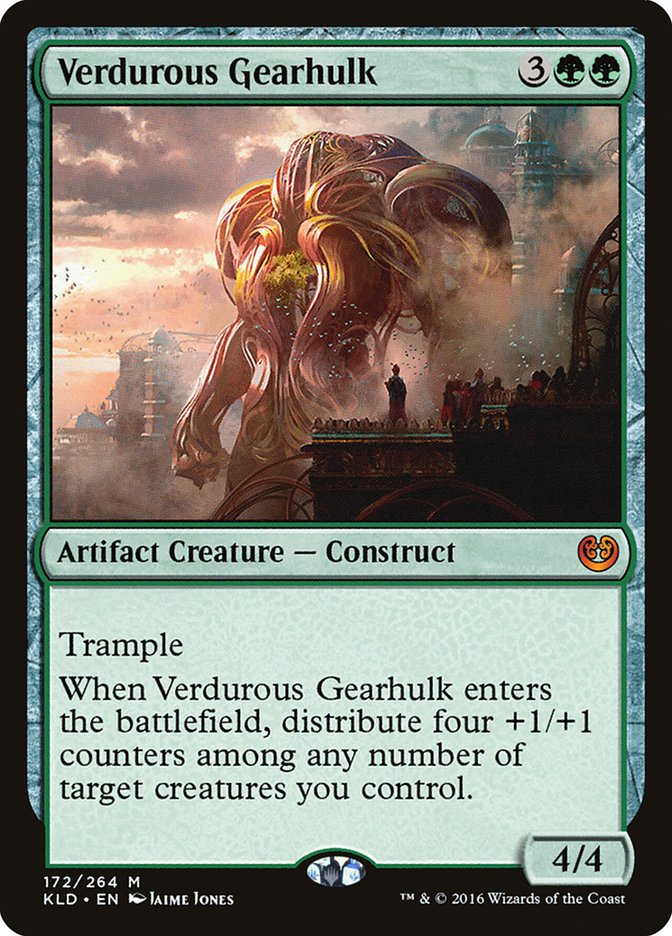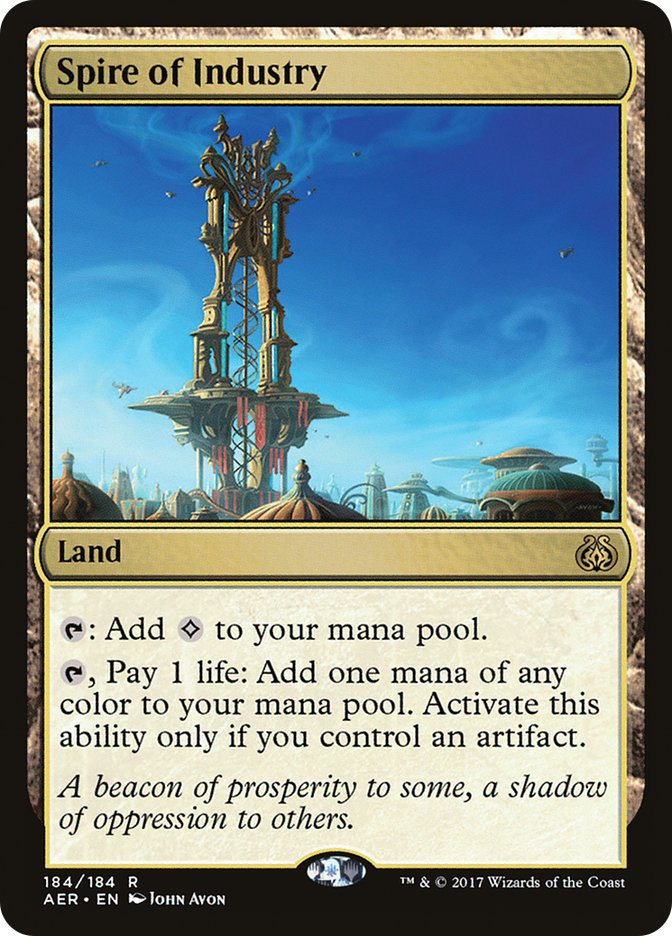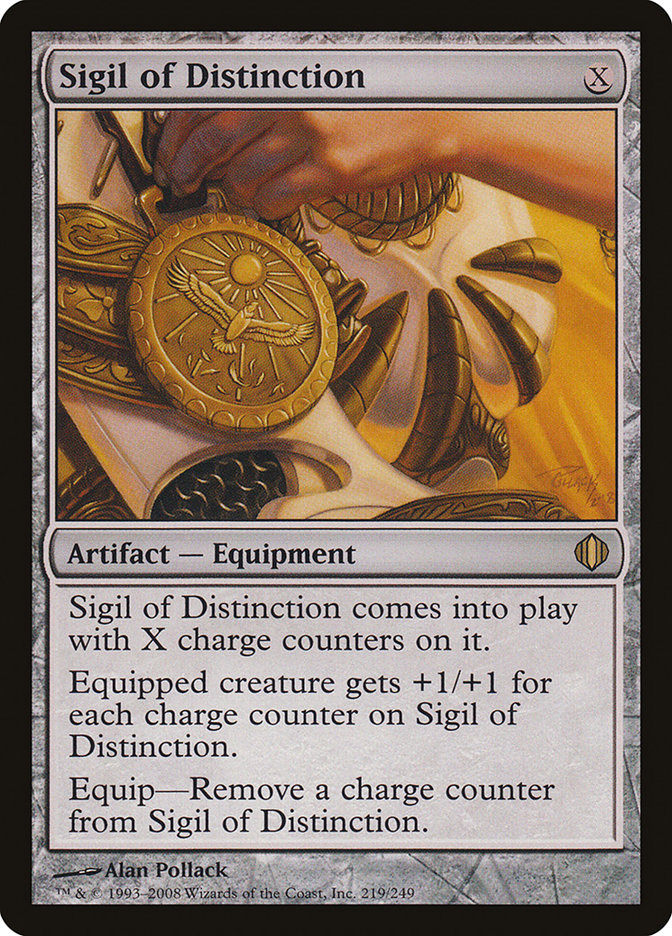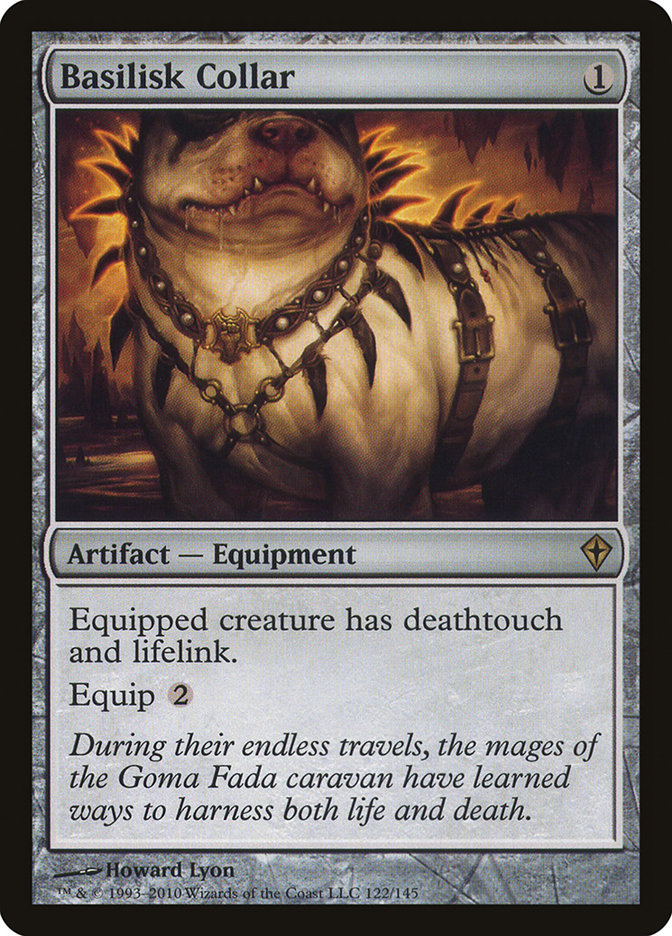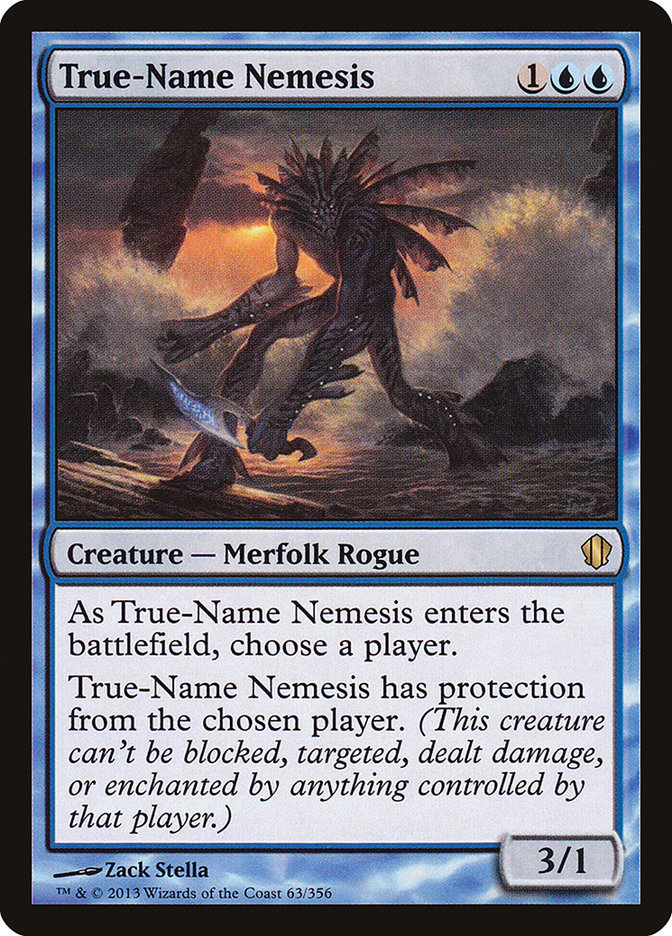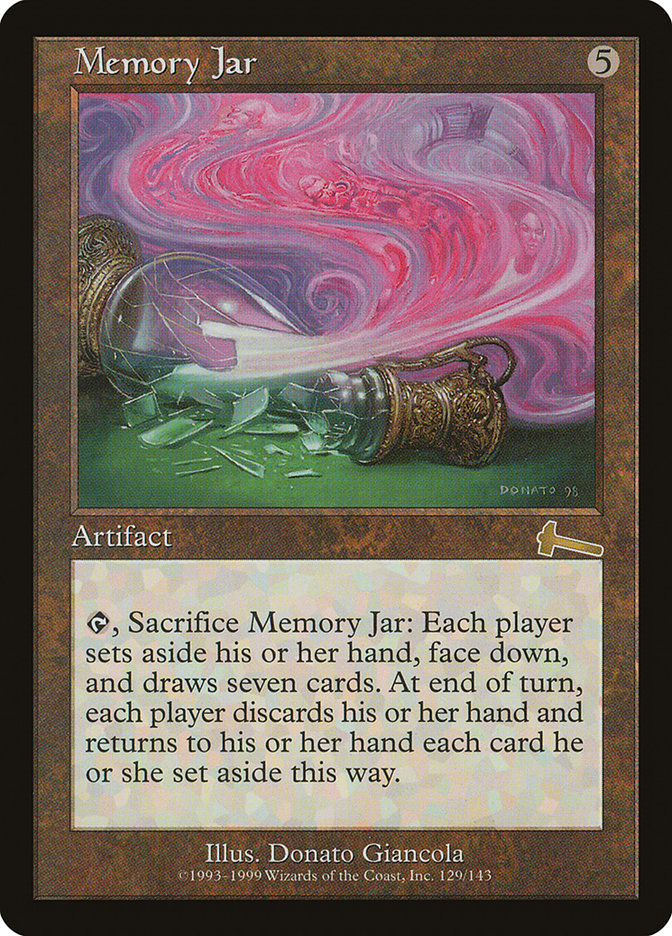The Modern Masters 2017 previews should start next week, so it’s time to start thinking about the financial impact that the set will have on the value of your Modern collection. Should you be panic-selling cards as soon as they’re revealed? Rushing to buy cards that are ruled out? Cracking packs? Hoarding boxes?
While it’s impossible to answer these questions concretely without having the Modern Masters 2017 card list in front of us, I do have the next-best thing: the Modern Masters 2015 card list and almost two full years of pricing data. Let’s see if we can use the data to make some predictions about how cards prices are likely to behave once Modern Masters 2017 drops and we start to get a sense of how the set is shaping up.
Now, it’s possible that Modern Masters 2017 will be a very different set from Modern Masters 2015. For all we know, every single rare will be a Tier 1 tournament staple and it’ll be possible to build several decks right out of the box. I doubt this will happen, though. WotC wants to try to get us to buy packs of these reprint sets every year, which means that they can’t just give us everything we want right now. If they did that, what would they follow it up with for the next Modern Masters set? I do expect Modern Masters 2017 to be slightly better than the 2015 version, however—it was a less-inspiring set than the first Modern Masters, and I suspect they’ll look to balance things somewhere in the middle.
Regardless, we’re going to use the 2015 data we have and take it as far as we can. Let’s start with our first question: What’s the price point where buying packs of MM17 makes good financial sense? Is it worth pre-ordering boxes at retail? Above retail?
Let’s start simple. How much are the contents of the average Modern Masters 2015 booster pack worth today?
This is just a math problem, and we can solve it easily. Using StarCityGames.com retail prices, we know that the average price of a non-foil mythic from Modern Masters 2015 is currently $32 while the average price of a non-foil rare is $4.15. That puts the average pack price (just for that rare and mythic slot) at $10.30. Assuming we value the foil slot and the commons/uncommons at a couple of dollars per pack, even buying packs of Modern Masters 2015 at retail right now is far from the worst thing you can do.
The problem here is twofold, though. First, the value of these packs is very high-variance. A tiny handful of cards (Noble Hierarch, Mox Opal, Tarmogoyf, etc.) make up the bulk of the average pack price, which means that if you go down to your LGS and drop $10 on a pack, you are much more likely to get one that has a 49-cent bulk rare than to make your money back. This makes buying packs a worse idea than the math might let on unless you really love to gamble or you want to invest in multiple cases of product.
Second, you have to think about how much you value having specific cards versus a scattering of rares from throughout the set. In order words, which is worth more to you: the four cards that you need to finish your Modern deck valued at $25 each, or several dozen random cards valued at a total of $130? I suspect that most of us would (rightfully) take the playset. To me, then, pack value has to be worth at least one-and-a-half times the value of the singles before I’m willing to just start cracking boosters for the hell of it.
Of course, it’s not all bad news if you love opening packs. The fact that Modern Masters 2015 packs are still worth (on average) more opened than their initial MSRP means that you can justify buying boxes at retail if you want to draft them with your friends. Again, you probably aren’t going to be able to actually sell the cards you open for as much as you paid, but the overall hit shouldn’t be that bad, either.
Regardless, do not pay more than MSRP for packs of Modern Masters 2017, even if you are very excited by the first round of previews. From what I’ve heard, allocation is not especially limited for this set, and it wasn’t difficult to find boxes of either Modern Masters 2015 or Eternal Masters at ten dollars per pack. Just be patient and you should be rewarded.
What should you do if Modern Masters 2017 contains a card that you currently own? How much value are you likely to lose?
We have to go into a little bit more depth here – average appreciation/depreciation just won’t do. Everybody knows that Tarmogoyf is going to behave differently from, say, Wolfbriar Elemental.
Let’s begin with the set’s fourteen decent mythic rares—I’m not even going to dignify Comet Storm with a moment of my analysis. How do their current prices compare with their pre-MM15 values? Take a look:
- Mox Opal – Up 33%
- Karn Liberated – Up 14%
- Tezzeret the Seeker – Down 6%
- Emrakul, the Aeons Torn – Down 7%
- Elesh Norn, Grand Cenobite – Down 35%
- Tarmogoyf – Down 37%
- Bitterblossom – Down 38%
- Primeval Titan – Down 44%
- Kozilek, Butcher of Truth – Down 48%
- Dark Confidant – Down 48%
- Kiki-Jiki, Mirror Breaker – Down 50%
- Ulamog, the Infinite Gyre – Down 52%
- Vendilion Clique – Down 59%
- Iona, Shield of Emeria – Down 75%
Okay, so there’s quite a bit to unpack here. First of all, two cards—Mox Opal and Karn Liberated—have actually gained value since being reprinted. Two others—Tezzeret the Seeker and Emrakul, the Aeons Torn—are worth more or less the same as they were two years ago.
What makes these cards different? They all see more play now than they did in the spring of 2015. Mox Opal sees play in Affinity as well as Puresteel Paladin and Lantern decks. Karn Liberated is a staple in Eldrazi Tron. Dozens of decks use Emrakul, the Aeons Torn as a finisher, a strategy that only keeps growing in popularity. Tezzeret the Seeker is very good in Breya-based Commander decks as well as casual brews featuring many of Kaladesh‘s most exciting cards.
There are also a few cards here that see roughly the same amount of play now as they did in 2015. Tarmogoyf lost about a third of its value, but it’s still the most expensive card in the entire format. That makes some amount of sense—the supply of available Tarmogoyfs probably increased by close to one-third, if not more, and the Modern player base is probably about the same size now as it was in 2015.
The other card that lost a ton of value despite still being a staple is Dark Confidant, which dropped by almost 50%. Again, though, Dark Confidant was the third- or fourth-most-valuable card in the format at the time, so it had a long way to fall. Does this mean that Liliana of the Veil will follow the same trend? It’s hard to know for sure. Tarmogoyf and Dark Confidant were reprinted in two straight Modern Masters sets before their price took a serious tumble.
What happened to all the other cards that lose 40-60% of their value? Well, they see less play in Modern than they did in 2015. In fact, many of them were already on the outs before being reprinted. Kiki-Jiki, Mirror Breaker wasn’t really being used outside of the occasional Kiki Chord list. Bitterblossom was supposed to help out the B/W Tokens deck that never really caught on. Primeval Titan tanked after the Summer Bloom ban. The two other Eldrazi titans were exclusively casual cards. They’re all good cards, but their supply outstripped their demand and that demand has never really returned.
Do these trends hold for the rares in Modern Masters 2015 as well? Let’s take a look:
- Surgical Extraction – Up 130%
- Noble Hierarch – Up 20%
- Spellskite – Down 13%
- Etched Champion – Down 34%
- Fulminator Mage – Down 40%
- Leyline of Sanctity – Down 44%
- All Is Dust – Down 45%
- Blinkmoth Nexus – Down 60%
- Cryptic Command – Down 62%
- Daybreak Coronet – Down 74%
- Wilt-Leaf Liege – Down 83%
As you can see, the same pattern is more or less true here as well. Noble Hierarch and Surgical Extraction both gained value thanks to seeing a lot more play in the shifting metagame. On the extreme opposite end of the spectrum, Daybreak Coronet and Wilt-Leaf Liege had already fallen out of favor by the time Modern Masters 2015 went to press, so they dropped by more than three-quarters thanks to an almost complete lack of demand. In between, Fulminator Mage, Spellskite, and Etched Champion see about the same amount of play and lost about 40% of their value.
Let’s put it all together and see if we can come up with some conclusions:
1) Some cards printed in Modern Masters 2017 will gain value over the next couple of years. We can’t really predict these shifts without knowing what the future of the metagame will be, though.
2) Most true format staples will lose about 40% of their value due to the reprint.
3) Modern cards that are only expensive due to supply restrictions (former staples that no longer see much play) should lose between 60-80% of their current value.
What does it mean for your collection? Well, 40% is not enough of a drop for me to recommend selling your staples and buying them back later. For starters, you are unlikely to get full retail once the preview is made public. And even then, unless you own a retail store, you probably aren’t going to be able to find anyone willing to pay what a given card is “worth.” You’re better off just holding onto your collection and eating the value drop.
That said, there may be a solid trade window in between when the card is previewed and when the set is released where the price has only dropped by 20-30%; if so, you might want to consider moving them for something more stable if you can. It’s probably not worth it unless you’re a high-volume trader or very concerned with every last dime of value, but it’s still good to have an idea of where these prices are likely to land.
What cards might land on this list? Here are a few:
Fulminator Mage Tarmogoyf Liliana of the Veil Stony Silence Noble Hierarch Snapcaster Mage Surgical Extraction Mox Opal Spellskite Abrupt Decay Dark Confidant Scavenging Ooze Engineered Explosives Arcbound Ravager
That said, I do recommend selling any non-staples that are reprinted as soon as you can. Wilt-Leaf Liege, for example, was a $25-$30 card before being reprinted in Modern Masters 2015. It’s a $4 card now. You probably could have gotten something like $7-$10 each for your copies even after the reprint was announced, which looks like a killer deal in retrospect. What potential Modern Masters 2017 reprints could end up on this list? I’m glad you asked:
It might also contain cards that are expensive primarily due to scarcity and will drop significantly despite seeing some play in top decks:
Mishra’s Bauble Damnation Crucible of Worlds Horizon Canopy Ensnaring Bridge
All right, let’s move on to our final question of the day. How high are format staples that aren’t in Modern Masters 2017 likely to climb? At what point does it make sense to start speculating on these cards?
Let’s take a look at what happened to a few of the cards that were considered the biggest omissions from Modern Masters 2015. I went back through my old articles and came across the following cards. In this experiment, I defined short-term gain as the price plateau inevitably following the card’s post-MM15 spike. I defined long-term as the difference between the card’s price today and the card’s price before MM15 preview season. Take a look:
- Short-term: 21% gain
- Long-term: 23% gain
- Short-term: 22% gain
- Long-term: 84% gain
- Short-term: 61% gain
- Long-term: 1% loss (Conspiracy: Take the Crown reprint)
- Short-term: 62% gain
- Long-term: 65% loss (Conspiracy: Take the Crown reprint)
- Short-term: 83% gain
- Long-term: 64% gain
- Short-term: 84% gain
- Long-term: 73% gain
- Short-term: 92% gain
- Long-term: 78% gain
- Short-term: 96% gain
- Long-term: 55% gain
Interesting, right? The two most expensive cards didn’t really spike—instead, they gained just over 20% of their value after MM15 was released. In both cases, the card continued to gain value well after the MM15 hype period died down.
The biggest common and uncommon omissions from MM15 both saw a massive 60% uptick before being reprinted about a year later. Inquisition of Kozilek would have likely seen a similar loss to Serum Visions had it not been reprinted at rare.
The four lower-value rares almost doubled in price before settling into gains closer to 60-70%. In every case, you would have been best off selling into the initial hype. However, these cards were all very solid buys at their pre-MM15 prices regardless of what you did.
What does this mean for you? Well, it tells me that you should probably try to be an active buyer once the full spoiler for Modern Masters 2017 is out. Even if you have to pay 20-30% more than current retail for the non-inclusions, recent history tells us that there will be room to make money.
What cards are people expecting to show up in Modern Masters 2017 that might not make the cut? Check out my article from November—Predicting Modern Masters 2017—if you haven’t had a chance to take a look at it yet.
This Week’s Trends
While Pro Tour-winning staples tend to fall off in the weeks after the event, that hasn’t been happening so far for many of the top Standard cards from Pro Tour Aether Revolt. Grim Flayer; Heart of Kiran; Verdurous Gearhulk; Gideon, Ally of Zendikar; and Spire of Industry (among others) have maintained their post-PT highs and show no sign of dropping.
This is likely due to just how dominant the G/B and Mardu Vehicles decks have proven to be. With very little competition for the format’s top tier, many competitive players have been priced into buying those decks as opposed to fighting the metagame with rogue brews on a week-to-week basis.
The good news is that there is another B&R announcement coming, and I have to believe that WotC will act. This new Standard format feels like it has many of the same problems that the last one did, and I suspect that we have a high chance of seeing a Heart of Kiran ban on March 13th. I suggest selling your extra copies of this card now, and I’d think about investing in the format’s slower decks while the prices are still down.
In Modern, Sigil of Distinction jumped from bulk to $2 thanks to Modern Puresteel Paladin. I’m not convinced that this card belongs in the optimal version of the deck, and the supply is way greater than for most of Puresteel Paladin’s bottleneck cards. Pluck these out of your bulk and trade them away.
Other Modern Puresteel Paladin cards seem a little safer. Mox Opal and Paradise Mantle seem unlikely to be reprinted in Modern Masters 2017, and their gains are more sustainable because they are played in more versions of the deck. Chalice of the Void has also continued to rise in price, and that card sees play all over the Eternal formats right now.
Basilisk Collar has been slowly climbing thanks to its interactions with Walking Ballista in Modern, but it hasn’t spiked yet. It’s a tournament win away from being a $20 card, though, so I’d grab your copies ASAP if you play Eldrazi Tron in Modern.
True-Name Nemesis briefly jumped over $30 before settling back down in the $20-$25 range. It sees a lot of Legacy play and it’s a house in Commander, but the supply is still great enough to keep it under $30 for now. In fact, I think a lot of the price spike was buyout-related. The card seems fairly stable at its current price (the spike happened a couple of weeks ago), so feel free to buy or sell this card at your leisure.
Memory Jar was bought out late last week, mostly because it’s a cool Reserved List card and someone (or several speculators) felt like it would make for a good quick flip. It might stick in the $20 range, but the more likely scenario is that the price slowly starts eroding back toward $15. If you’ve got these kicking around, selling now is fine.


